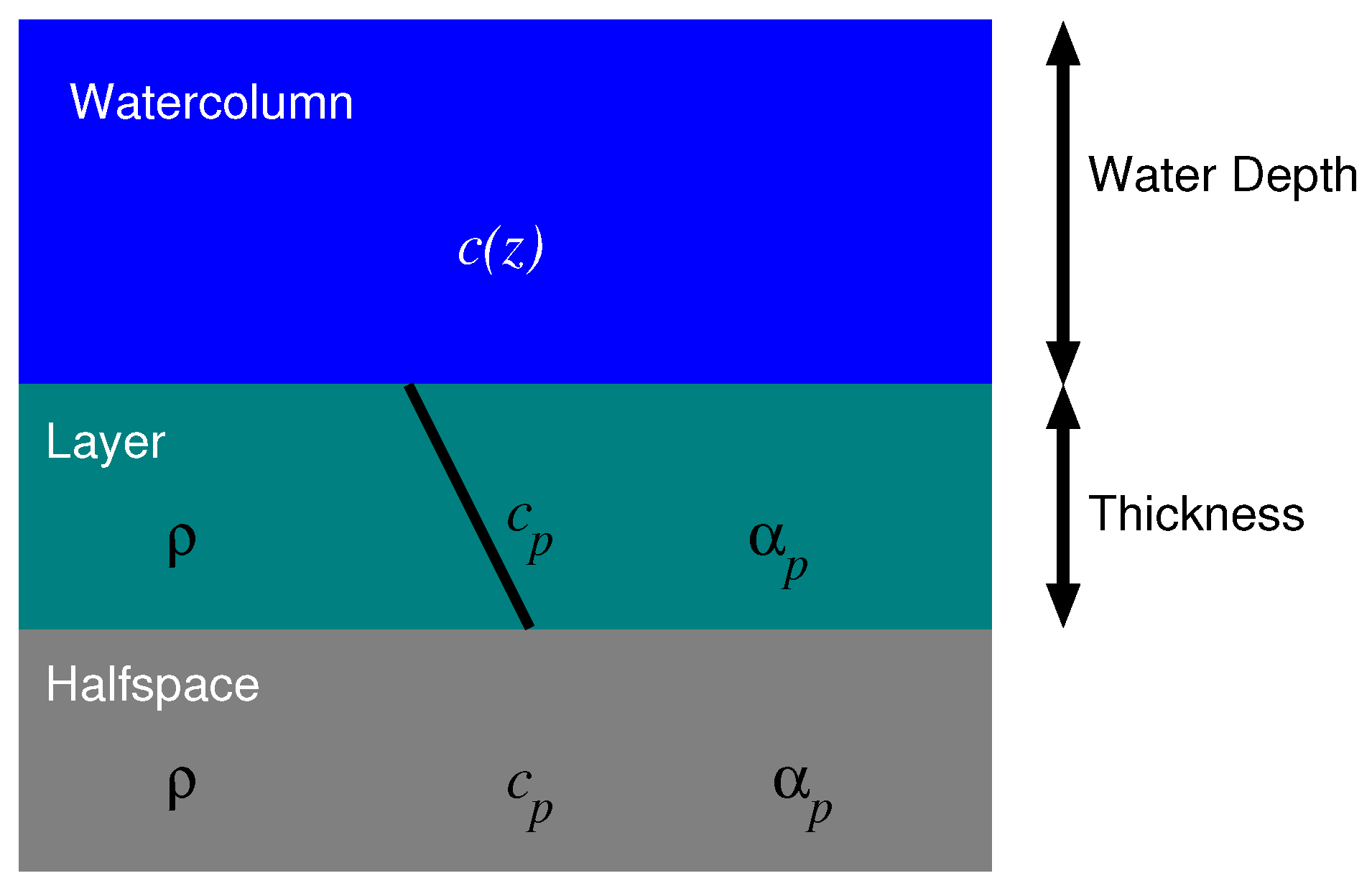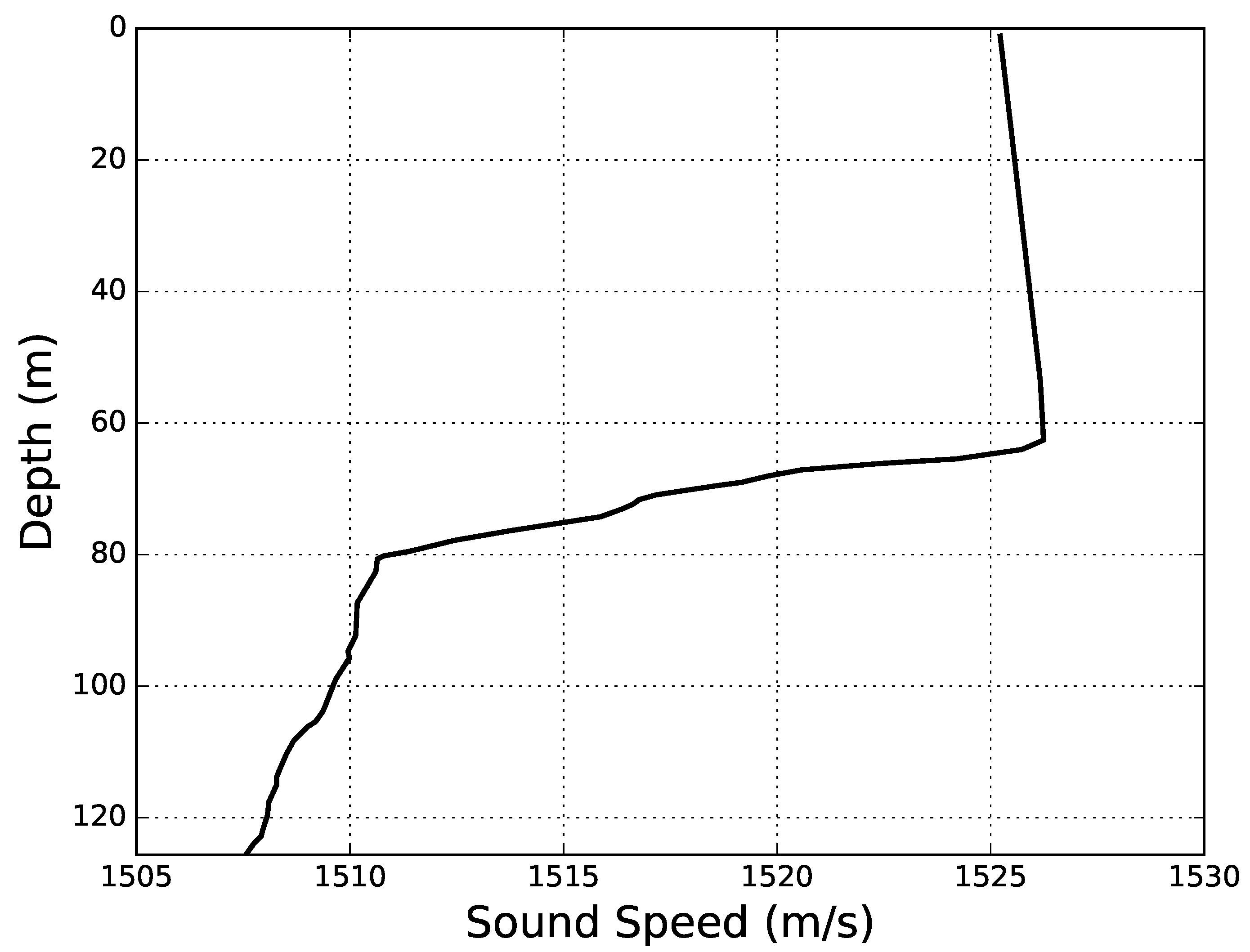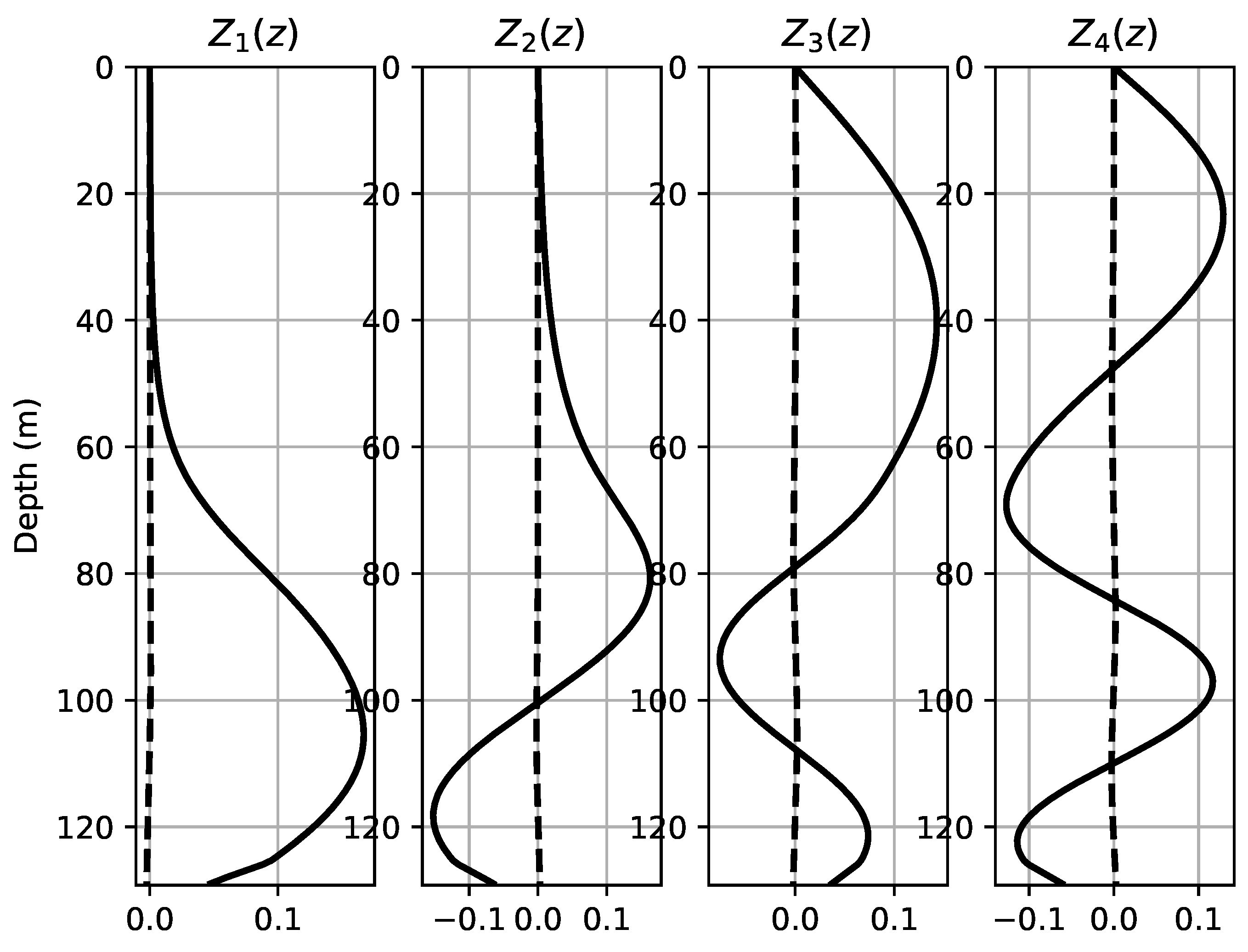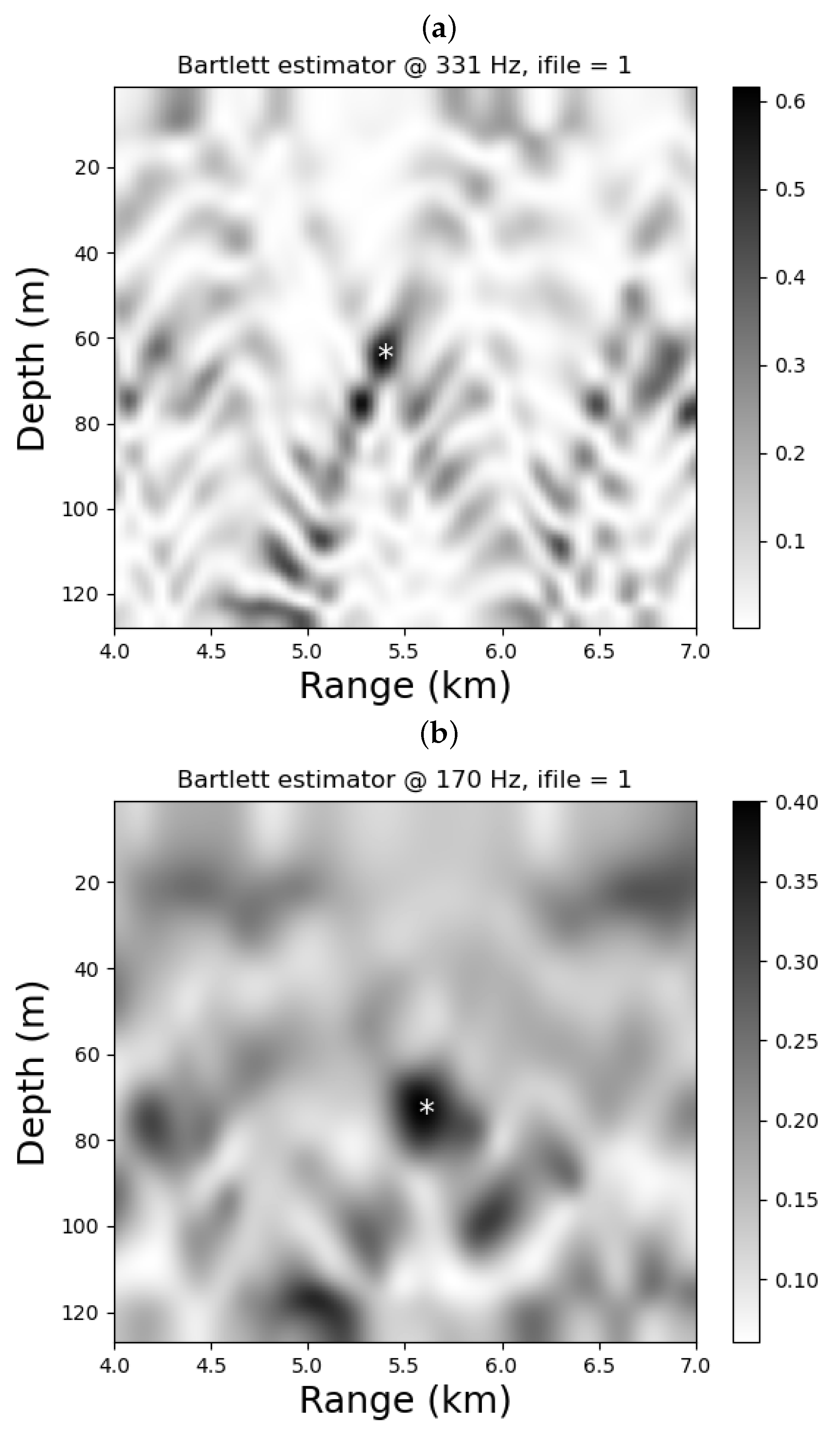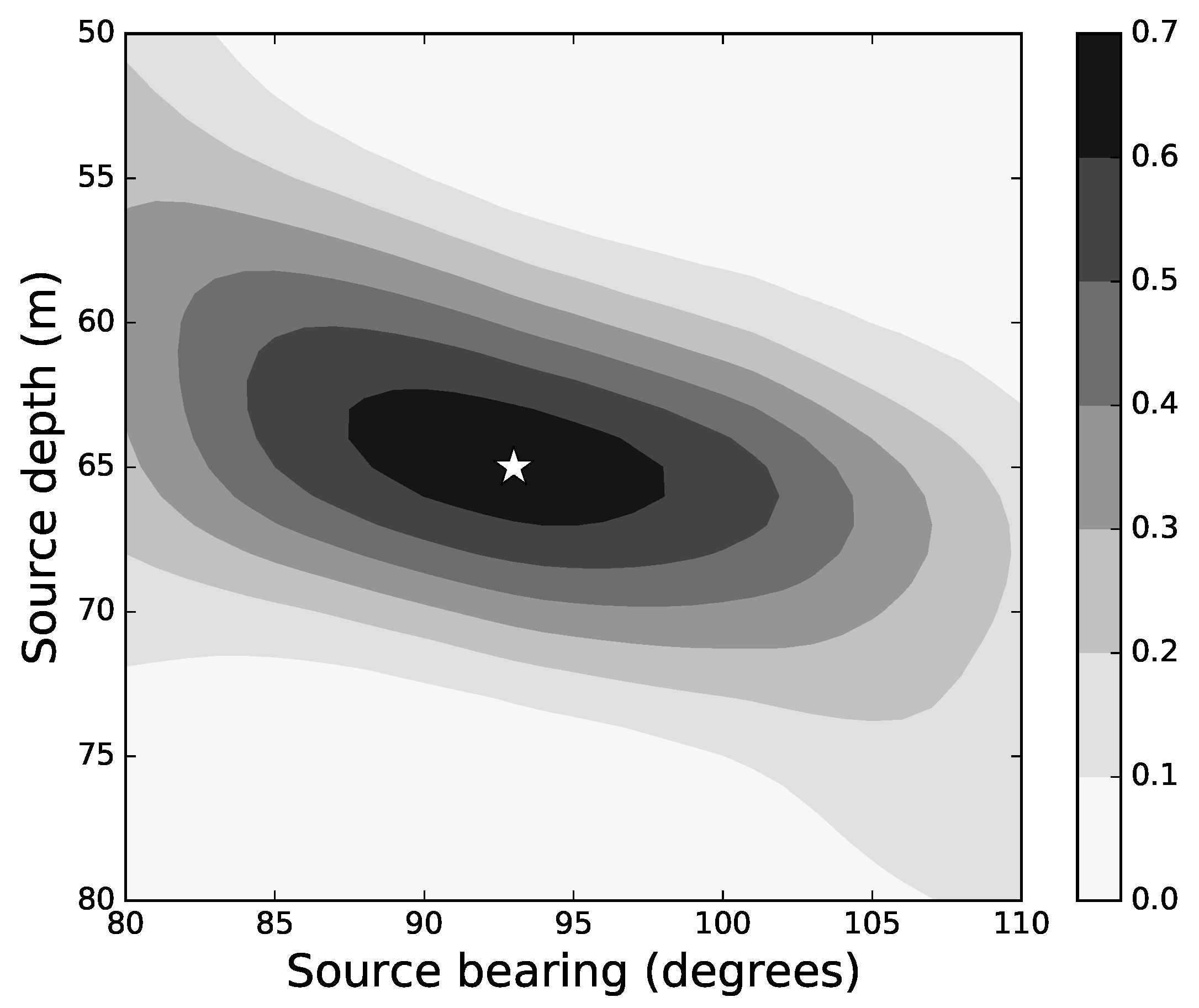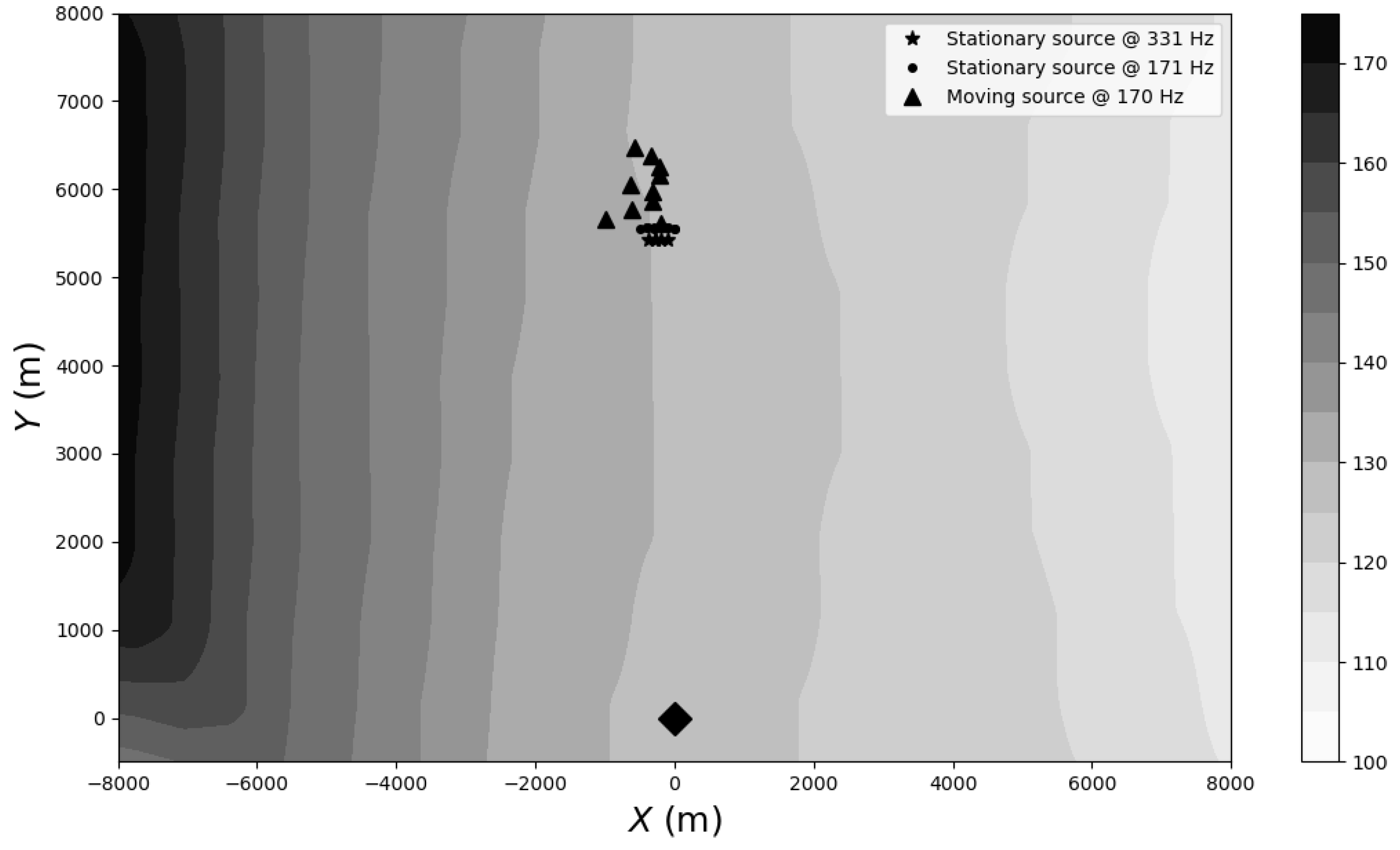Source localization is at the core of Matched Field Processing (MFP) [
1], a fundamental technique of Underwater Acoustics that generalizes the concept of plane-wave beamforming [
2]. In MFP, a set of candidate predictions of the acoustic field (called replicas) are to be compared with a given set of signal observations acquired at a single array; the replica with the better fit to the observations can be used to infer the position of the source. A critical condition for MFP to be successful is to have a proper knowledge of the sound speed profile, bottom properties, and local bathymetry and to take advantage of a reliable underwater acoustic model. Generally speaking, there are two different types of source localization: the first one is two-dimensional (2D) source localization, which can be seen as the problem of finding the source coordinates
within the search space defined by
; the second case is three-dimensional (3D) source localization, which corresponds to the problem of finding the source coordinates
within the search space defined by
, where
stands for source bearing, and in general
(the choice of cylindrical coordinates is a typical convention). In both cases, the calculation of replicas takes place among all possible combinations of coordinates within the search space; for obvious reasons, the number of combinations is much higher in 3D source localization than in 2D source localization. Strictly speaking, 2D environments do not exist because ocean bathymetries are always 3D; however, there are often configurations of the source and the array in which the sea bottom transect can be approximated as flat. In such cases, one can replace 3D source localization with 2D source localization and rely on a normal mode model to provide an efficient calculation of replicas over a given interval of source depths; this replacement is attractive in order to reduce the size of the search space but is achieved at the cost of losing the source bearing because the calculation of replicas depends on range and depth only. Two-dimensional MFP-based localization had been discussed in detail considering simulations and experimental data for both the narrowband and broadband cases [
3,
4,
5,
6,
7,
8]; additionally, non-MFP 2D localization with a single hydrophone has been shown to be possible as well [
9,
10]. Environmental Signal Processing (ESP) was proposed to overcome the bearing limitations of 2D source localization in [
11] by suggesting to take advantage of the bathymetry. To this end, one can consider two different approaches: the first one is the so-called
N × 2D modeling, in which replicas are to be calculated along 2D transects over
N bearings; in the second approach, replicas are to be calculated taking into account all the variability of the 3D environment. Environmental Signal Processing based on the
N × 2D approach using the KRAKEN normal mode model [
12] was discussed in detail for experimental data in [
13], but only for a subset of all possible bearings; under such conditions, the particular bounds on the source bearing certainly allow us to reduce the size of the search space, but this is a specific type of
a priori information that cannot be expected to be always available. Current computational resources certainly allow us to handle 3D source localization successfully for all combinations of parameters of the search space. However, by proceeding in this manner, the method seems to be missing one important fact, namely that the calculation of replicas over the entire 3D search space is undesirable because of the corresponding computational burden; besides, such calculation is also inefficient because a large percentage of the replicas will provide a low fit to the observations. The approach described in this discussion looks forward to the reduction of the search space for 3D localization through the identification of reliable bearings; to this end, source localization starts with a “2D initial guess”, which is nothing more than the result of 2D localization obtained under the assumption that the waveguide is flat. The 2D initial guess is then combined with ESP to identify regions of reliable bearings, and these reliable bearings are further reduced to a single bearing by searching over the bearing/range space. This search provides a unique bearing and a new range, which, together with the source depth of the 2D initial guess, represent the center of a reduced neighborhood in which the 3D search can take place. Certainly, there are cases, like cross-slope propagation in a wedge environment [
14], for which it is very unlikely to obtain a reliable 2D initial guess. However, the diversity of scenarios for which the 2D initial guess can be obtained is too broad to be considered here; it would be necessary to compare vertical versus horizontal arrays, narrowband versus broadband processing, mild versus rough bathymetries, single versus multiple hydrophone arrays, etc. This complex issue deserves to be addressed in future independent discussions. The proposed approach is exemplified here using the exceptional data from the SACLANTCEN 1993 Mediterranean Experiment, which are available online. (
http://spib.linse.ufsc.br/sonar.html accessed on: 14 June 2023) [
15]. The experiment itself is described in brief in
Section 2, together with the corresponding experimental data and the 2D initial guess. Localization and tracking are discussed in
Section 3, while conclusions and future work are presented in
Section 4.

